One of the most popular topics in the news today is electric vehicles. Regardless of where you stand on the issue, we can all agree that every vehicle has at least one scenario where it is the right tool for the job. When you look back in history, electric vehicles are not a new thing. When the automobile was getting a firm foothold in American life, a few folks opted for electric cars. Most of those people had above-average incomes. Unbelievably, the average buyer of a vehicle like this 1920 Auto Red Bug Buckboard for sale on eBay in Villa Park, Illinois was a very rich person. These little microcars were purchased as transportation around estates and in the places where the well-heeled congregated away from the masses. While many were gasoline-powered, this beautifully restored example is one of the rare electric versions. Is the current $2,550 bid a bargain for this highly unusual electric-powered pioneer?
In the teens and twenties, the headlines were filled with the comings and goings of what we would today call the “super-rich.” Folks with last names such as Getty, Rockefeller, and Carnegie joined their less famous brethren in lavish resorts when not doing captain of industry-type things. Many of these resorts banned automobiles but would turn a blind eye to smaller, less obtrusive forms of transportation. Looking at the pictures of such people made during the time reveals that they were not headed to anything that would look to us like a Jimmy Buffet concert. Fine leather shoes, full suits, and expensive hats ruled the day. Jogging must not have been a thing yet.
One of the ways they transported themselves around was with cyclecars. This term would be synonymous with microcars today, except for the fact that cyclecars were very minimalist in construction. One of the most popular was simply called Red Bug. In a convoluted corporate story, production started with a gentleman named A.O. Smith. Smith was the producer of a cyclecar called the Smith Flyer. This contraption was a four-wheeled buckboard body with a fifth wheel attached to the back providing propulsion via a single-cylinder gasoline engine. Smith’s American Motor Vehicle Company produced this type of automobile from 1916 through 1919. The rights to produce the vehicle were then passed to Briggs and Stratton.
Briggs and Stratton subsequently sold the rights to this vehicle, now called the Red Bug, to the Automotive Electric Service Corporation in 1924. From there, both gasoline-powered and electric-powered Auto Red Bugs were manufactured and sold by places like Abercrombie and Fitch. A fair amount of them made it over to showrooms in Europe, although those showrooms were likely a corner of a high-end outfitters shop. While a Red Bug looks to us like a child’s toy, their diminutive size makes them perfect for roaming around vast estates and resorts like Jekyll Island off the coast of Georgia.
One can easily see how a small, electric-powered microcar would be perfect for this kind of work. Anyone could drive it, as you were free of the rather complicated cranking and maintaining of a single-cylinder engine. All you had to do was turn the main switch to “ON” and mash the go pedal. It operates the same way that a golf cart does today and has much the same role. Perhaps one can even think of the Red Bug as less of an ancestor of today’s microcars and more of the earliest form of electric-powered golf cart evolution.
The pictures above and below show the means of propulsion. One would assume that the battery box would hold two of the most powerful automotive batteries of the time. Perhaps we have a Red Bug fan in our readership who can tell us if off-the-shelf batteries were used or if special batteries were made for this box to take into account frequent charging cycles. That direct current electricity was sent to the same type of electric motor used to start Dodges during that period. It would also be interesting to know the service life of one of these former starters in this application.
As for this Auto Red Bug, the seller tells us that it is a 1920 model. The rights to produce these vehicles were sold to the Automotive Electrical Service Corporation in 1924, but they must have manufactured these vehicles under license previous to that sale. It is advertised as one of the oldest Auto Red Bugs in existence and was believed to have been restored sometime in the 1950s. It was re-restored in 2020 to a high standard. That restoration took a year to complete, and every detail was attended to. It is said to run and drive perfectly but hasn’t been driven much since its restoration.
While the car will likely be a no-sale at the current bidding, there may be a good deal to be had if interested parties negotiate with the seller. These cars are eligible for awards in Antique Automobile Club of America (AACA) shows and are considered an automobile in the eyes of the law. They are an especially interesting conversation piece given our current discussion about electric cars. They are proof that the use of electric motors as a means of propulsion has a place but may not be the answer for everyone then or now.
Would this Auto Red Bug be the type of electric antique vehicle you would like to drive and take to shows, or is it a glorified electric go-cart? Please share your thoughts in the comments.
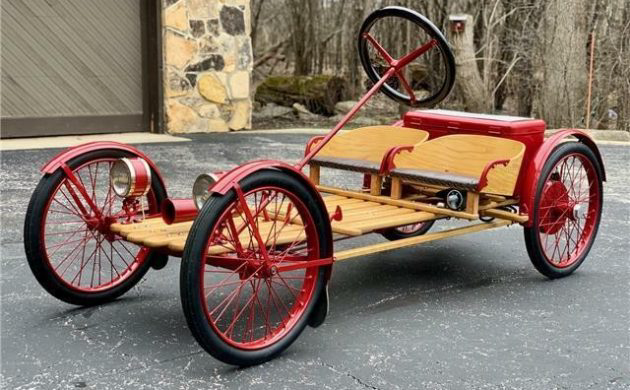
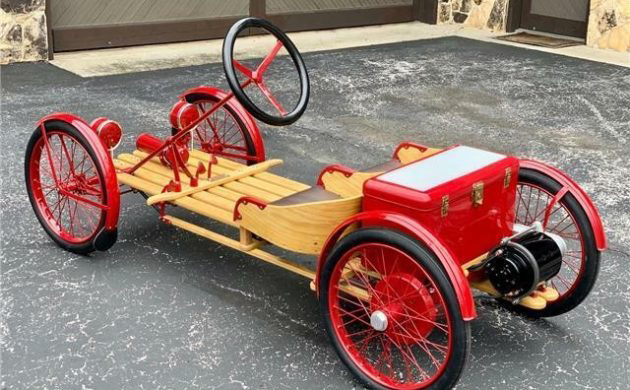

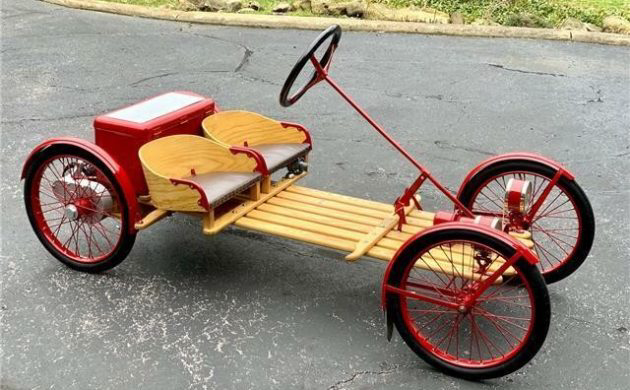
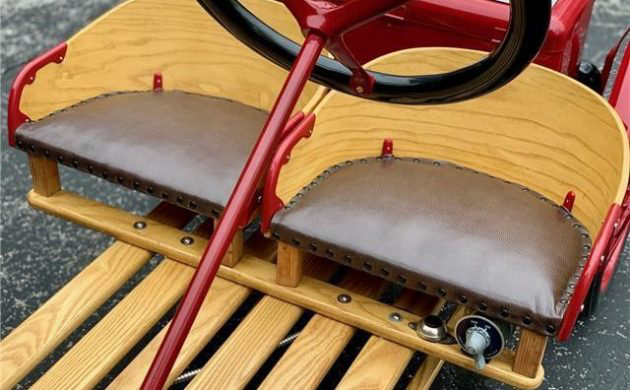
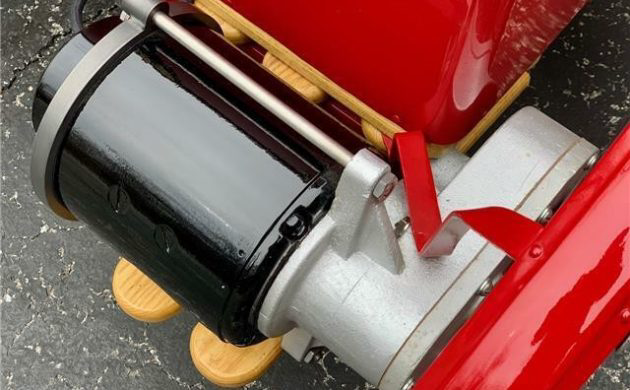
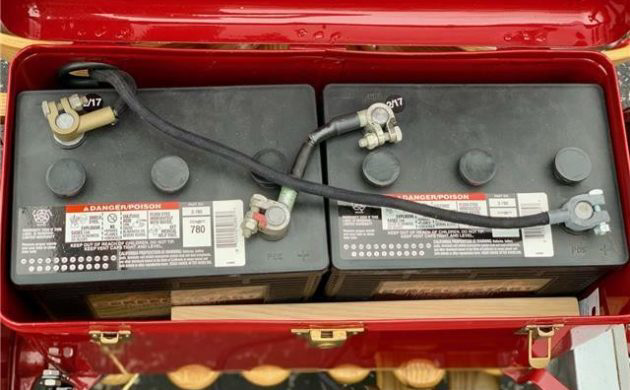
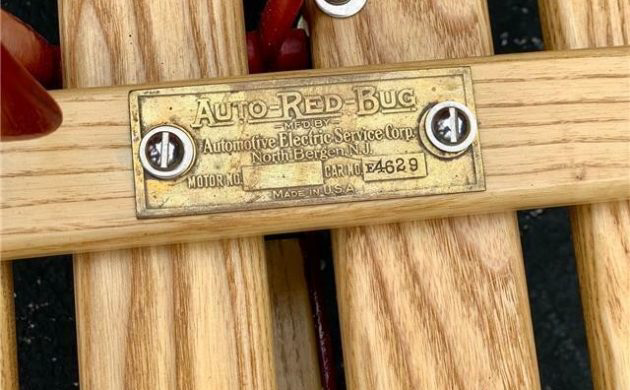


Well, a great rendition of the rich and famous, yet I beg to differ. A “rich” person wouldn’t be seen on something like this. What I see, is in an industrial setting, huge sprawling plants, the boss would be carted around by their “licksplittle” nephew that would drive them around, checking production. With only 2, 6 volt batteries,( I believe one 12v in 1920) range would be about 3 blocks. At night, if you dared, even less. The “motor” is a Dodge starter motor from the period. I think people quickly found out, halfway to the next tee, it ran out of juice, and as always, the gas job did the job, just like today.
Once again, Briggs,,AO Smith, Milwaukee proud.
Those batteries are hooked in series to make 12 volts as all Dodge Brothers cars were at that time. That is a standard North East brand starter generator from a four cylinder Dodge Brothers.
The wood looks like Ash, seat backs might be Birch plywood.
This car is a great example of what was used back in the day. Old ladies required larger cars that were closed in but were otherwise not much different for propulsion.
The ideal electric car for me would be the one in the attached pic (I borrowed this from the blueprints). That car originally was in an article in Mechanix Illustrated back in 1963. A guy built the car for his 4 year old grandson, who would obviously be in his 60s now. Dad got a set of blueprints back then and I’ve still got them today. A former co-worker got a set of blueprints and actually made one for his grandkids…
Popular Mechanics was another. In the want ads, you could get everything from “dig your own gold mine” to “cure yourself with electric shock”. It was truly an early form of internet. I think with the proper materials, you could’ve built a space ship. “SEND FOR PLANS TODAY”,,,cost, .25 cents,,and they made a fortune.
Howard you are wrong and Jeff is spot on the Jekyll island museum has hundreds of photos of the Vanderbilt s Rockefeller Getty Goodyear and crane families zipping around in these
At that time there was no bridge to the mainland and these were the only self propelled vehicles allowed on the island Love Jekyll island one of these state park campgrounds anywhere
$3,250 now and reserve not met, i clicked on sellers other items, and over $1,900 came up!!
Great right up, Jeff!
Thanks.
Didn’t the starter motor referenced here also function as the generator in the Dodge applications? I recall standing beside one of those Dodges as the owner started the engine and was amazed that they were practically noiseless. If my memory is correct they drove through a chain to the front of the crankshaft which would help explain how they were so quiet, no geared starter drive engaging a large flywheel ring gear, with all the noise that would entail.
Reminds me of the pit cart we built in the early 2000s to get around the race tracks with. No electric but a good old Briggs and Stratton gas burner. 31 mph with hydraulic disc brake. Fun. Beautiful restoration on this one.
Very advanced for the time. Four-wheel independent suspension comes from the twisting of the chassis (or is it the floor)
Just think the first electric vehicle was produced 85 years before this one! In 1835 by Robert Anderson. That’s 189 years and we still can’t perfect it!!
Thank you!
As though gas/diesel cars have been “perfected”? Electric vehicles have pros & cons to be sure. here are some pros: no oil leaks or changes. no trips to the gas station and the “zombies” that descend upon one. Charge with house mounted solar panels and operating costs are close to nil. They can be very, very fast and have good handling from low CG. Range is definitely improving. So, when most of the fleet is electric, gas will be cheap for our Rambler/Hudsons although one may need door-dash to deliver it. Although you & i probably will not make it that far in the future…..
Jekyll island still has a fleet of replicas of these with modern electric drivetrains you can rent now even us proliteriate working class LOL lots of fun buzzing around and like I said but mid typed Jekyll island campground is one of the best state parks in the country
But they are not really replicas in fact the only thing the same is the name the red bugs now are fully enclosed glorified golf carts but still CALLED Jekyll island Red Bugs LOL
Guys. As mentioned above by Doug and in the red bug owners manual they had 2 heavy duty 6 volt batteries in series to have available more ampere hours of power than would be available from a single 12vbattery. Also that North East electric model G unit had the shunt field windings and associated field fuse ( for charging) disconnected. I wouldn’t take less than the list price of at least $3500 for mine either. It was restored years ago and had it down to Oregon to a Micro Mini car meet and was the OLDEST and SMALLEST unit there. I drove it on to the field from special ramps from my van. HAVE FUN!
I owned a Red Bug electric for a short time. Probably the #1 reason I sold it was damn near every time I took it out for a drive, I would get pulled over by the police because they didn’t think it was a legal vehicle. It got to the point where I would tell the officer as he walked up to me that yes, it was a real car and legally licensed.
The main reason for it’s sale was the batteries were expensive “Marine deep cycle” versions that were 3 times the cost of a regular 6 volt battery, yet they were good for only about 5 to 6 MPC [Miles Per Charge]. My Red Bug came with it’s original charger too, it was almost half the size of the whole car, but I never tried to use it.
It may have originally used a set of Edison Nickel-Iron batteries. Each cell was nominally rated at 1.2v. An array of eight fully charged cells would measure between 11-13v. The size of the encasement looks big enough. I took an electrical engineering class in junior college where we built a couple of cyclecars by hand. We tried a starter motor but it didn’t last very long.
There were at one point about a hundred manufacturers around 1920, mostly small gas engine makers. They were popular for a short time as an affordable second car in Los Angeles where it wasn’t practical to store an automobile.
That is all oak